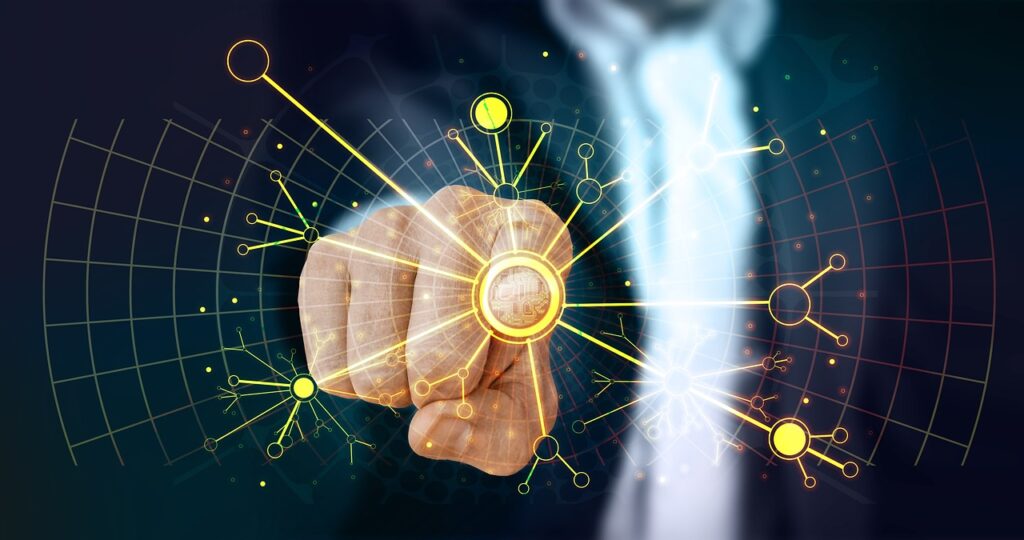Top Technologies to Learn in 2024

In 2024, several technologies are likely to be at the forefront, driving innovation and shaping industries. Here are some top contenders:
Artificial Intelligence (AI) and Machine Learning (ML):
Numerous industries, including healthcare, banking, the automobile industry, and more, are still being revolutionized by AI and ML. Among the most important subfields in this field are natural language processing (NLP), reinforcement learning, and deep learning.
All things considered, AI and ML are spurring innovation in a number of industries by providing chances to boost productivity, sharpen judgment, and develop fresh approaches to challenging issues. It is anticipated that these technologies will have an exponentially greater impact on society and the economy as they develop.
Read also – Can Technology Replace Teachers

Blockchain:
Blockchain technology is used in supply chain management, digital identity verification, smart contracts, and decentralized finance (DeFi), in addition to cryptocurrencies.
Blockchain continues to mature and gain mainstream adoption, its potential to transform various sectors and reshape the global economy becomes increasingly evident.
Internet of Things (IoT):
The Internet of Things, or IoT, is a quickly growing network that connects systems, sensors, and devices to collect and share data for smart home and industrial automation, environmental monitoring, healthcare monitoring, and industrial automation.
IoT technology is driving innovation and transformation across multiple domains, offering opportunities to improve efficiency, productivity, safety, and sustainability in various sectors and urban environments. As IoT continues to evolve, its integration with other emerging technologies such as artificial intelligence, edge computing, and 5G connectivity is expected to further accelerate its growth and impact.
Cybersecurity:
As cyber threats change, the need for cybersecurity measures grows. There is a great demand for experts in fields including network security, encryption, threat detection, and safe software development.
In the connected and digitalized world of today, maintaining cybersecurity calls for proactive steps, constant observation, and quick reaction to new threats. Organizations may manage risks, safeguard their assets, and uphold confidence with their customers and stakeholders by allocating resources towards comprehensive cybersecurity solutions and remaining attentive against constantly emerging threats.
Read also – Beyond the Bottle: Owala’s Commitment to Sustainability in Every Sip

5G Technology:
5G technology is making advances in augmented reality (AR), virtual reality (VR), autonomous vehicles, and the proliferation of IoT devices possible with its high-speed, low-latency communication.
With 5G technology, high-speed, low-latency connectivity for AR, VR, driverless cars, and IoT devices opens up new possibilities for innovation and disruption across industries. As 5G networks spread and develop, we should anticipate more breakthroughs and cutting-edge uses that make the most of this revolutionary technology.
Edge Computing:
Edge computing minimizes latency and permits real-time data analysis by bringing processing capacity closer to the data source. Applications such as industrial automation, smart cities, and driverless cars require this.
By putting processing power closer to the data source, enabling real-time data analysis, and lowering latency for mission-critical applications like autonomous vehicles, smart cities, and industrial automation, edge computing is transforming computer infrastructure. We may anticipate more breakthroughs and developments that spur the use of edge computing across numerous industries and disciplines as edge computing technologies continue to develop and grow.
Read also – Wine Mathematics: How Many Glasses in Your Bottle?

Augmented Reality (AR) and Virtual Reality (VR):
Virtual reality (VR) and augmented reality (AR) technologies are revolutionizing training simulations, education, gaming, and healthcare. The range of uses for these technologies will only increase with their increasing sophistication.
Applications for AR and VR technologies will spread throughout industries as they get more advanced and affordable, revolutionizing the way we work, study, and engage with the world. AR and VR are transforming the way we interact with and consume digital information, opening up new possibilities for creativity and innovation in a variety of fields, including gaming, education, healthcare, and training simulations.
Quantum Computing:
Quantum computing: Though it is still in its infancy, this technology has enormous promise to solve intricate puzzles that traditional computers are unable to handle. There is interest in quantum machine learning, quantum cryptography, and quantum algorithms.
Despite the fact that quantum computing is still in its infancy and faces several technical obstacles, including qubit coherence, error correction, and scalability, the subject is developing quickly thanks to developments in hardware, software, and algorithms. With the development of quantum computing technologies, a new era of creativity and discovery could be ushered in by addressing some of the most important problems in engineering, science, and society.
Biotechnology and Bioinformatics:
Personalized medicine, drug discovery, agricultural biotechnology, and synthetic biology are being propelled forward by advances in biotechnology, genomics, and bioinformatics.
Advances in biotechnology, genomics, and bioinformatics are driving transformative innovations in personalized medicine, drug discovery, agricultural biotechnology, and synthetic biology, with far-reaching implications for human health, agriculture, and the environment. These interdisciplinary approaches are unlocking new opportunities for scientific discovery, technological innovation, and societal impact, shaping the future of biotechnology and the life sciences.
Read also –Cleanse Your Way to Wellness: The Ultimate Colon Broom Review”

Renewable Energy Technologies:
As awareness of climate change grows, so does the use of renewable energy sources including solar, wind, and hydrogen. Smart grid technologies and energy storage solutions are also necessary to incorporate renewable energy into the current infrastructure.
n order to transition to a low-carbon energy system and help mitigate climate change, cut greenhouse gas emissions, and build a more sustainable and resilient energy infrastructure, renewable energy technologies, energy storage solutions, and smart grid technologies are crucial. Maintaining funding for these technologies’ development, implementation, and research is essential to meeting climate targets and quickening the world’s shift to renewable energy.



One thought on “Top Technologies to Learn in 2024”